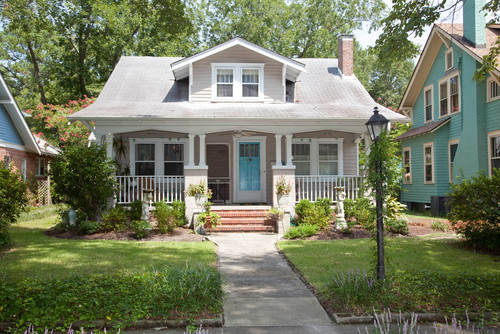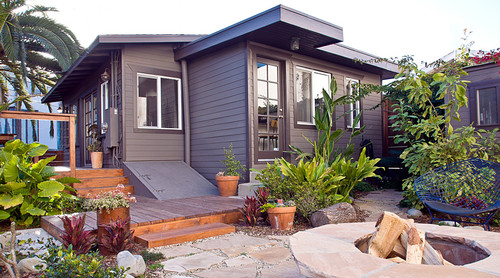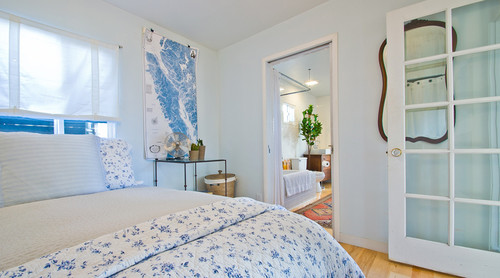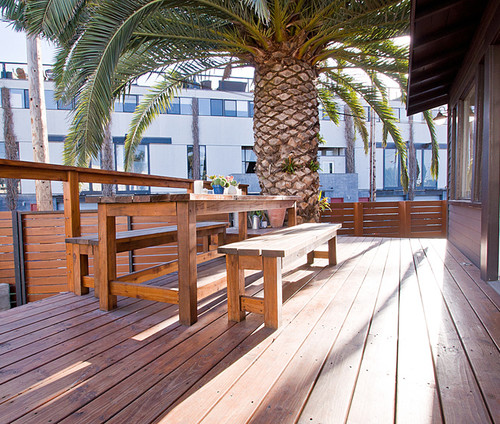How to Prevent Costly Plumbing Problems
When that slow drip turns into a torrential flood, you know it’s time to call the plumber. But while plumbing problems can arise out of the blue, the truth is that many plumbing problems are predictable and even preventable. If you can catch the problem early enough, you can save yourself time, money, and all the aggravation and potential damage caused by a sink or toilet backing up and leaking water all over your beautiful new hardwood floors. Here’s a quick primer on what you can do to help small plumbing problems morphing into severe ones:
- Stay on top of slow drains. One of the most common plumbing problems is a clogged drain. But before it gets to that point, you’ll probably notice slow water drainage. If you do, consider letting a plumbing professional handle it. While many people opt for do-it-yourself repairs not every homeowner has the skill needed to resolve these issues before they become more serious. If you do want to tackle the issue yourself, try a wet/dry vacuum which can beat time-consuming extraction with an auger.
- Be proactive. Sometimes you call in a professional to take care of a small problem, and the plumber identifies a larger problem that needs to be tackled. But perhaps it’s not urgent, and it’s costly, and you opt to put it off. Don’t. Neglecting a critical repair can lead to more expensive repairs in the future. Taking precautions, like installing a water flow measurement device, can help you discover things like small leaks before they become larger problems.
- Get regular service and maintenance. Smart homeowners put themselves on a regular maintenance schedule to address ongoing issues. For instance, a home experiencing tree roots blocking outdoor drains might arrange to have a plumber clear drains every six months, just to prevent any flooding damage that might occur if blocked drains back-up and overflow into a home.
- Get your plumbing inspected. Sometimes, it’s not so much about actual service as it is simple inspection. Every so often, have a professional plumber assess your entire system to see if its at risk for future issues. For example, depending on the age of your home and the water lines running to it, pipes made from older materials can be major sources for clogs and leaks. Old terra cotta waste lines can become cracked and invaded by roots, and steel pipes are prone to internal rusting that lead to a buildup, eventually bursting or reducing water pressure to unacceptable levels. Having a regular inspection can help you address these sorts of issues before they lead to big headaches.
- Avoid do-it-yourself installations. Many homeowners think they can tackle installing a new sink or replacing an old tub or shower. That is, until they’ve finished the job, only to find that one critical element wasn’t installed properly. Don’t let this be you. When it comes to installing new plumbing fixtures, you’re better off opting to go with a professional who can ensure that all your wonderful new fixtures will function like a charm.
- Plan ahead. Anytime you do a home repair involving opening floors or walls in your bathroom or kitchen, consider making upgrades to older pipes nearing the end of their lifespans.
Design Dilemma: A Small Bungalow with Style
A bungalow is defined as a low house, with a broad front porch, having either no upper floor or upper rooms set into the roof, typically with dormer windows. Bungalows are a big part of the American landscape — especially in cities like Los Angeles and San Francisco, where many neighborhoods are a mixture of bungalows done up either in Craftsman or Spanish stucco style. The picture above is very typical bungalow.
What’s really cool about bungalows is that their small stature — usually just five or six rooms of no larger than about 1500 square feet — is perfect for today’s lifestyle. Small means less to furnish, less to heat, less to decorate, less to pay for, usually increased walkability, and certainly a lighter footprint on the earth. And that’s where we’re all at these days!
The best thing about bungalows is that though they normally have a very classic layout, they are incredibly easy to adapt to any family’s needs. Below a beachy bungalow in Venice, California exemplifies the adaptability of this house style, showing that the bungalow does not have to mean dark or drab, as many people think.
The exterior shot above gives you a sense of the small size. This two bedroom home, owned by architect Cayley Lambur and her partner Kyle Blasman, is a diminuitive 750 square feet. A 1914 Craftsman bungalow, the home, at the time that the couple bought it, suffered from problems with mold and dated finishes But Lambur was able to dramatically change the character of the home by opening things up and keeping everything bright and light.
In the long, narrow livingroom, pictured above and below, the front door opens directly onto the livingroom (as is true in many bungalows) that means there’s no wasted space of a hallway. A long bank of windows makes natural light the stand out feature of this home.
Lambur opened up the floor plan of the home by taking down a wall that divided the living room from the kitchen. She added a peninsula to give the kitchen an L-shaped layout.
In keeping with the small scale of the home, Lambur chose smaller, Euro-styled appliances. And below, the bedroom feels airy and open, thanks to Lambur’s choice to open up an extra door leading to the bathroom, which was formerly only accessible directly from the living room.
Below, a photo of the renovated master bathroom.
And here’s the backyard deck:
And in case you’re interested in what it looked like before, the photo below gives you an idea:
What a wonderful transformation, proving that comfortable, bright and light, doesn’t necessarily mean big!
How Swag Valances and Blinds Enhance the Look of Your Windows
When it comes to interior design, there’s no detail that has quite the impact that window treatments do. Upon entering a room, window treatments immediately catch the eye, setting the tone and style of a home. Old World or Modern, Traditional or Rustic, you’ll know instantly the mood just by examining what type of window treatments have been chosen. But they serve another important purpose too: they provide privacy, control the amount of light that enters a room, play an important role in controlling room temperature and protect artwork and furniture from the sun.
Two interesting options for dressing up your windows include valances and window blinds — both of which serve slightly different functions but which can complement each other, even on the same window.
Swag Valances
Swag valances are a swath of material artfully draped over the upper side of a window. The great thing about swags is that they instantly emphasize and highlight a window, while at the same time adding elegance and class. You’ll most often see them used in traditional and formal styles of decorating, and especially in formal rooms like living and dining rooms, although you’ll often see them in bedrooms too. Swag valances come in a wide variety of colors and fabrics, ensuring that you can easily find just the right set to match furnishings and the other colors in your room.
You’ll notice that some swag valances only dress the upper half of the window, while other swags gently waft down to cover the sides of a window opening. If you’re looking beyond decorative appeal to cover a window for privacy, swags should be used in conjunction with blinds, shades or more substantial curtains. Be sure to choose a fabric that will not fade due to sun exposure, as there’s nothing that detracts from a room like sad, faded curtains!
Blinds
People often confuse blinds and shades. But, in fact, they’re quite different. Blinds are amomg the most widely used window treatments for homes and offices because they are relatively inexpensive and can be purchased at most big-box store. Shades, on the other hand, are sometimes custom-made and are available in a range of materials, from soft fabrics to grasses and even wood.
Blinds and shades can be installed either horizontally or vertically. Both ways offer privacy as well as the ability to filter light. What’s more, you can also install motorized shades controlled with a remote that are especially ideal for oversized windows that are difficult to reach.
As you can see, there are loads of options and tons of factors to consider before choosing a window treatment. Because so many factors come into play, it’s a good idea to speak with a design professional who can help fill you in on the advantages and disadvantages of each type of material. If you choose the appropriate window treatment you’ll find it will add undeniable appeal and functionality to your home.













